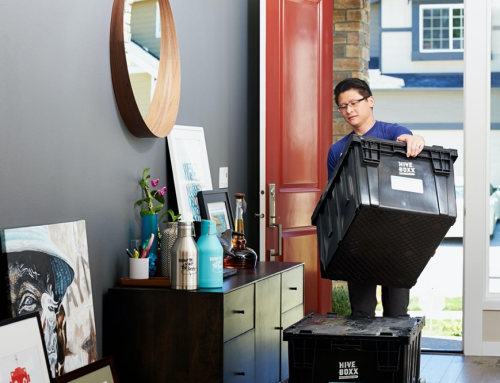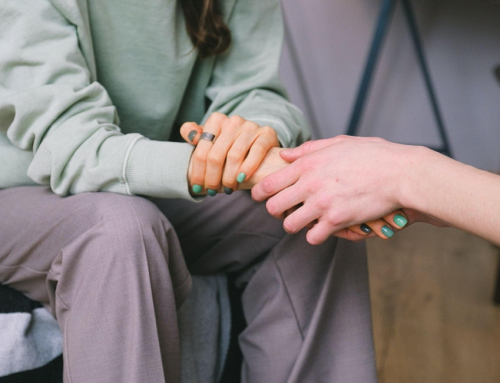At the top of our agenda we must place the task of collecting our children — of drawing them under our wing, making them want to belong to us and with us. — Gordon Neufeld, Hold On to Your Kids
In our busy culture of independence, it is easy to lose connection with our kids and with our partners. As early as their toddler hood, we start to detach from our children. We spend way more time directing or prohibiting them from doing something than we do working on their attachment to us.
Our adult romantic relationships are similar in that after the relationship is deemed serious or permanent, we stop working as hard to keep our partners close to us. We take the relationship a little more for granted. We start pointing out what to do and what not to do.
Collecting our loved ones is especially important after a physical or emotional separation. School and work are two common physical separators. Sleep counts as a time of separation as well. That is why bedtime rituals are nice for children and adults.
When my children return from a weekend with their dad, I’ve noticed a bigger need to re-collect them on Monday. We’ve been apart for a few days. They have distanced subconsciously. I try to greet them with lots of eye contact, a smile and a loving touch or hug. Re-establishing connection makes me feel better too. I’m closing the void or gap that formed while they were away from me. The same goes when my fiancé travels or is with his sons for a few days. An intentional effort to reach out to each other goes a long way toward re-bonding us.
If there has been an argument or bout of anxiety/depression for example, re-collecting our special people is necessary, as well. Emotions run high or low and feeling connected calms us.
Gathering our loved ones to us essentially hones the attachment bond. According to doctors, Gordon Neufeld and Gabor Mate, authors of Hold On to Your Kids: Why Parents Need to Matter More than Peers, the attachment dance has four steps.
Getting in their face or space
The objective of this first step is to attract a child or lover’s eyes, evoke a smile and hopefully get them to nod. Greetings serve us well in this regard. When we greet our child or partner, we want to use good eye contact to make sure they feel seen. With infants and small children, we literally get in their faces and make goofy gestures. With older children we have to be more subtle, so they don’t feel the need to move away from us. This, as with adults, may look more like getting in their space (versus face), in a friendly way.
They may be distracted by television, their phone, their own mind, etc. but it is our job (as the mature parent and/or more secure partner) to collect them with our eyes, voice, touch and time. Activities together go a long way toward keeping them away from distractions.
To connect with anyone, the goal can’t be to get them to do something or act a certain way. It will backfire. The goal has to be to improve the relationship. It’s important it be about being together and enjoying each other in a long-term nurturing way.
Give them something to hold on to
Children and partners need something that they can hold on to that makes them feel like they are holding on to us. Attention and interest are two top options. Signs of affection work well too. When we express warmth and delight at our loved one’s presence, we give them something special that feeds them. They feel appreciated and valued. They will want to maintain that, i.e. hold on to it.
If your child or romantic partner are insecurely attached (avoidant ), they may not react as positively to the above. They may feel smothered or long for autonomy. A less openly affectionate approach may work better.
You can point out what you have in common or align with them when taking sides is necessary. They will notice the similarities and loyalty and feel reassured.
According to Dr. Neufeld, we cannot collect a child by giving what is expected or demanded. That is conditional collection and indulgent. You behaved this way so I’ll give you love. You demanded attention so I’ll pay attention. The child knows that kind of attention may go away and is based on behavior and not pure love of them as they are.
The key is to take initiative and gather them to you when it is not expected. Let them see us with a twinkle in our eye simply when they enter the room.
Let them know dependence is OK
We all fear looking needy. We want our children to grow up and leave the nest. Both of these make it embarrassing to ask for help. The truth is we are dependent creatures. We need others to help us grow and survive.
The more OK it is to rely on someone, the more autonomous and secure we feel. We know we have someone to back us up. Children raised with this kind of security, have an easier time leaving home.
Secure couples are eager to offer a hand or listen to each other’s problems. This increases connection. If we told our partners they should be able to handle everything themselves and be independent, the relationship would suffer.
Serve as a compass point
Offering guidance gives children and partners relief. Pointing things out, explaining what will happen next and introducing them to others, gives our loved ones important information about the world.
Some phrases that guide our children and our adult loves are: “Let me show you how this works”, “I have planned this for tonight”, “I would like you to meet so and so”, “You are the kind of boy who…”
Using our guidance to learn things about the world and themselves, builds confidence and attachment.

There is security in having a guide we trust. When we don’t collect our children and they turn to their insecure peers for guidance, everyone loses. Our maturity and consistency make us the best and most reliable resource for them.
We can’t be passive parents or partners. We have to collect children and lovers by staying in their space or face, giving them something they want to maintain (ie the relationship), letting them depend on us, and lastly, offering our guidance when needed.
Do your kids or your partner need re-collecting? How have they gone astray? What could you do to bring them close to you again?
Photo by Arleen wiese on Unsplash
Photo by Juliette F on Unsplash
I’m excited to announce my latest courses on brendaknowles.teachable.com:
Is It Introversion or Insecure Attachment? Why We Withdraw or Distance from Our Partners
If you have wondered why you or your partner drift away from intimacy and togetherness this course will have answers for you. If there is withdrawing or distancing between you and your loved one and you would like understand why, Is It Introversion or Is It Insecure Attachment? will help.
Click the links or images to learn more.

AND
Introverts Explained: Why We Love You but Need a Break from You
Are you or your partner an introvert? Does he get tired and want to go home after a few hours of socializing? Does she seem happy to be intimate one day and need space the next? Introverts Explained can help you gain understanding about yourself or your partner.










Kindnesses, of course. Actions, of course. The words with time and actions and generosity in many ways, mean nothing, really.
Generosity with time. Lattes in the morning from Starbucks — every morning, just because it’s what you do for the one you love! Helping with whatever it is. Moving something. Dishes. Cleaning. Taking time to listen, to share, to hear. To support and encourage. Time for walks, simple things, a drink or movie out, or a movie at home. Find a game you love to play with each other — backgammon, for example! — and take time for that. Not for serious competition … lol … but just for the pleasure of playing and being together. Going to bed together, not separately (not always possible, but usually it is) ….
I think listening is one of the greatest gifts we can offer to anyone. And just … to listen. Perhaps ask questions. Perhaps empathize. Just listen … be not eager to jump in with opinions, advice, ‘similar experiences,’ none of it. Just … shhh … listen. Really listen. Arms open (not crossed on our chest) … leaning forward a bit … looking into the eyes of the one who is talking.
Yes, yes, yes, Brenda … I do agree!
not a good job of editing! Third sentence … ‘The words WITHOUT time and actions’ ….!! My bad!
Brenda, this is a very good post.
I liked these paragraphs:
“Our adult romantic relationships are similar in that after the relationship is deemed serious or permanent, we stop working as hard to keep our partners close to us. We take the relationship a little more for granted. We start pointing out what to do and what not to do.
“Collecting our loved ones is especially important after a physical or emotional separation. School and work are two common physical separators. Sleep counts as a time of separation as well. That is why bedtime rituals are nice for children and adults.”
I think those rituals of attention — if rituals is the right word — those acts of affection and love — they do fade after a couple have been together for awhile. The irony is that those things — the touches, the smiles, the attention, the questions, the words of affection, admiration, interest, excitement to be with our partner — are what drew us to the other person, and that person to us. They are the food of life for a relationship.
And then? I’m not sure what happens. We take the other person for granted? We don’t feel we should ‘need to’ express those things to our partner any more? Our partner should just ‘know’ that he or she loves us — of course I love her, well isn’t it obvious that I love him? We’re married, aren’t we? There are weird things that happen. And as those ‘little things’ fade, and often disappear, the relationship fades, too. It may not disappear; a couple may stay together. But the joy which the relationship brought, that fades, too.
And it’s all for want of those twinkling eyes you wrote about when your partner comes in the room. Those moments — and it’s always just moments, isn’ it? these little things take moments — before bed, when waking up, when leaving the house, when coming home — the things we used to do … we quit doing.
And then one day … “I don’t know what happened. It just doesn’t feel the same.”
I’m afraid most couples, most individuals, don’t really understand the power of their words, their touches, those reassurances — “I love you, I’m crazy about, I love being with you more than anything else.” And we slip from those words, to words that are indifferent, devoid of affection and appreciation. That are mundane. Words which are the same words we use with a friend, perhaps — often we might speak with more enthusiasm to hear from a friend, or see a friend, than we do our partner.
It’s very odd, isn’t it?
We all thirst for those things which we give and receive in the ‘early stages’ of a relationship, a marriage. And we continue to thirst for them. Perhaps we do fear appearing needy — if we tell our partner that we need to hear words of affection, admiration, praise, encouragement; and we never stop needing it, then we are ‘weak.’
There seems to be some resentment that our partner (and we!) need those things.
But as you said, we are dependent. And we depend on our partner for those things, and our partner depends on us for those things. Maybe we convince ourselves that we are ‘independent.’ Why, then, be with someone? What, then, is the need for this other person? If my partner is ‘independent,’ what does she need me for? Because if we’re not needed … well, that’s an empty feeling, isn’t it?
And then one day … hmmm … we ‘meet someone’ somewhere. He or she seems very interested in us, how we think, what we like, what we do, who we are. His or her eyes light up, there’s that twinkle in THAT person’s eyes, which is rarely or never in our partner’s eyes anymore. That inflection in her voice, isn’t there any more. But wait — this other person has that inflection … she seems genuinely excited to see us … and we are drawn to it.
Ironically, the very things which might now draw us to this other person … we no longer get from our partner. We used to. And then … it … faded … quietly … away. We go from ‘You are the most amazing person I’ve ever known’ … ‘I can’t wait to be with you’ … to a basically indifferent ‘I love you’ at bedtime, said with no affection, and we roll over and go to sleep. Empty. Aching. Hurting. Needing.
Your articles always provoke a lot of thought, Brenda. I don’t always reply to what you write. Notes like this one provoke a lot of emotion. I have thought a lot about these things. I have not thought of these ‘little things’ as re-collecting our loves ones. It’s a new phrase for me. I think of it as show and tell, I guess. Show the one you love, how you love her. Tell the one you love, how you love him, and what you love about him. And never stop telling. It should never get old to show and tell the one we love, all these things. It should never get old to receive these loving gestures and words.
I think all relationships pretty much live and die on them. All relationships. Especially the most important one in our lives. And that’s the one that often gets the most neglect. And it should be no surprise that one day … ‘things have changed.’ But it is a surprise. A shock. And it’s tragic, isn’t it?
Thanks for letting me share my thoughts on this, Brenda. Thanks for your always very good articles.
Michael
Hi Michael. I get the sense that you know and have experienced this very situation of adoring someone and enthusiastically receiving them to feeling indifferent or even annoyed by them. I know I have experienced this. I wish I could keep the open enthusiasm and joy alive, but it seems to always fade (at least somewhat) to familiarity and disappointment or frustration. With my current relationship, I am working to keep collecting and re-collecting him, offering support and joy. I know I bring challenges to him as well. It is our human nature to be alert for threats, perhaps that is why after a time, we see all of the challenges or threats. The crazy thing is the more supportive and understanding we are, the more rich and joyful the relationship is. Challenges do keep the relationship and its parties growing.
One thing I’ve discovered recently is that it takes more than supportive and kind WORDS to keep a relationship healthy. It takes ACTION or active participation. Helping out with work around the house, caring for and working with kids or going to events together, for example. Do you agree Michael? I always appreciate your experience and input. Thank you!!!
I think a big part of it, too, is simply staying soft and gentle and tender. Tender in words, tender in our voice, in our expressions, our touches. Stay soft … none of us need to come home, or spend time with, someone who is harsh, or cold or distant. stay soft … in every way. as best as we can. stay kind. Keep our eyes and our voice soft, gentle … open to the ones we love.